Don't wanna be here? Send us removal request.
Photo

Circe, the Enchantress by Edmund Dulac, 1915.
4K notes
·
View notes
Photo

Franz von Stuck – Tilla Durieux als Circe. 1913. detail
9K notes
·
View notes
Photo

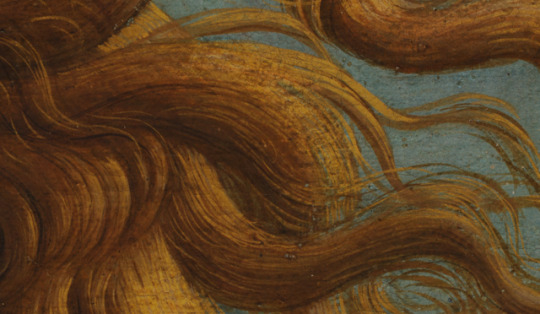

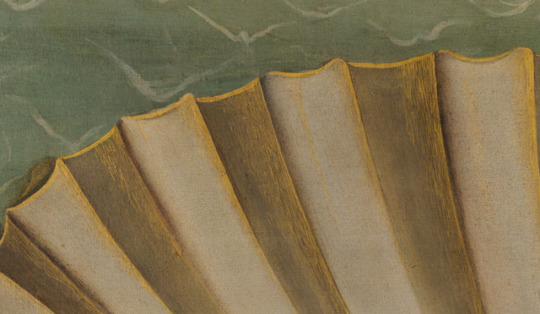
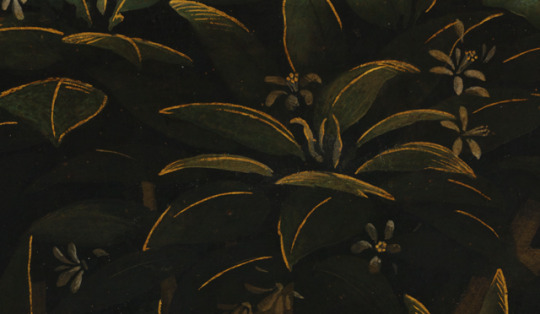


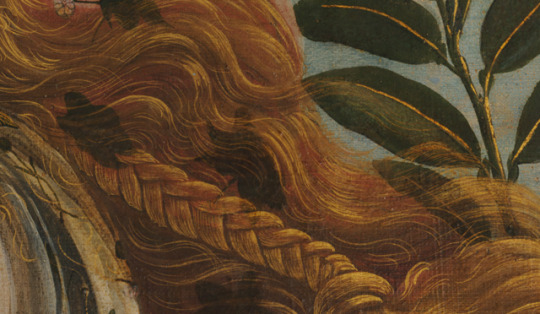

Details of The birth of Venus
Sandro Botticelli (1483 - 1485)
13K notes
·
View notes
Photo

Leonardo da Vinci - Portrait of Ginevra de’ Benci (reverse side). 1474-78
1K notes
·
View notes
Text
Calypso’s island is magical. It supplies every possible demand Odysseus might have for food, drink, clothing, sex, companionship or conversation. He has only to pay over the coin of his self. His entire self. Calypso wants Odysseus body and soul. She wants everything about him. Physical, moral, and verbal. She wants the work of art that he has made of his own human being. And she wants it for all time. She promises to immortalize him.
When he rejects the transaction she’s baffled. Why would anyone choose to abandon a consumer paradise where he could live forever with a ravishing divinity? Odysseus’s answer is: “I know you’re a goddess and bigger and better looking than my wife, for you are deathless and ageless while she is a mere mortal, and yet, I prefer Penelope and what I really long for is the day of my return.” Odysseus’s answer sets up a calculus. He measures the infinite days and infinite pleasures of Calypso against the single day of his homecoming and the mortal attractions of his wife. The infinite comes up lacking.
Neither Odysseus nor Homer ever tells us exactly what the infinite lacks. That is, we never get an objective description of Penelope. We do not know if she is dark or fair. Odysseus no where itemizes the qualities that make her more desirable than a goddess. What becomes clear in the final stages of the poem however as husband and wife engage in a so called recognition scene that extends from Book XVII where Odysseus shows up in disguise at Penelope’s house to Book XXIII where she falls weeping in his arms and calls his name is that these two people are a match for each other in wits and ambiguity.
We watch Her throughout the six books seduce him by the simple tactic of never letting him know what she’s thinking. She dangles herself. She dangles the prospect of homecoming before him in a series of tantalizing interactions. She gives him clothing, a meal, a bath, a bed in the courtyard and several deep conversations without ever letting on whether she’s recognized him or not. Scholars still disagree on where exactly in the poem she decides Odysseus is Odysseus and she should welcome him home. Penelope’s power is the power of a meaning withheld.
—Anne Carson on the distinction between selling and selling out
8K notes
·
View notes
Quote
“But I didn’t and still don’t like making a cult of women’s knowledge, preening ourselves on knowing things men don’t know, women’s deep irrational wisdom, women’s instinctive knowledge of Nature, and so on. All that all too often merely reinforces the masculinist idea of women as primitive and inferior – women’s knowledge as elementary, primitive, always down below at the dark roots, while men get to cultivate and own the flowers and crops that come up into the light. But why should women keep talking baby talk while men get to grow up? Why should women feel blindly while men get to think?
Ursula K Le Guin, from What Women Know
3K notes
·
View notes
Photo

Sorry Anubis, seems like your Osiris is broken.
18K notes
·
View notes
Text
On Pelicans
To his good friend thus wide, Ill ope my arms
And, like the kind, life-rendering pelican
Repast them with my blood.
- Hamlet
In Heraldry, “The Pelican In Her Piety” is the attitude of a pelican wounding her own breast with her beak to feed the blood to her chicks. She is the rare female animal in heraldry and iconography, and is an inversion of the phoenix, who dies selfishly and eternally, forever alone. The pelican in Western folklore is female and ancient, and while she is associated with sacrifice, she does not necessary die from it, and she performs the sacrifice if her young are starving or wounded.

Figure 1. The Pelican In Her Piety. Nobody involved in this embroidery had ever seen a pelican.
By feeding her children the blood from her breast, she can actually resurrect them from literal death. In medieval times she was conveniently associated with Christ, who gave his blood in sacrifice to ��resurrect” his “children.”
Now the significance of the pelican is mostly forgotten, though you may notice her in pieces of art history around Europe.

Figure 2. More pelican, more piety.
This Kate Beaton comic shows Elizabeth I of England and her famous quote about having the heart and stomach of a king. The “albatross” thing is a joke that Kate Beaton made because it’s funny.

Figure 3. Nobody ever links to Kate Beaton properly, have you noticed that?
However, it’s ALSO funny because Elizabeth I took the pelican as a personal symbol and called herself the mother pelican of England. She was painted in a matching pair of portraits with a phoenix jewel in one portrait and a pelican jewel in the other.
“Nance, delighting in her pelican, erected a lapis lazuli shrine, and set the holy pelican by her feet.”
- Nanshe Converses with the Birds
Nanshe, the Sumerian goddess of Social Justice, had some kind of long conversations with pelicans, which were her symbol.
“ I am like a pelican of the wilderness; I am become as an owl of the waste places.“
- Psalms 102:6
David, the psalmist, is also having some pelican feelings.
In Ancient Egypt, pelicans were associated with the dead and were protective against snakes. The Ancient Egyptians were much better at drawing pelicans than the medieval Europeans.

Figure 4: The Pelicans in the Tomb of Horemheb Know Something.

Figure 5: British WW2 pelican poster depicting a mother pelican in her piety, but the nest is actually a solder’s helmet [x].
Personally, I think the mother pelican would have been a better Metaphorical Animal for resurrection/protection than a shitty phoenix in Harry Potter, especially as you could pick up on lovely resonance from that frankly stupid Lily Evans plothole. If the ~*~fancy magic of a mother’s sacrifice~*~ can spontaneously shatter an evil wizard’s soul, but the mechanism is fundamentally ignored thereafter, then what was the fucking point? Surely anyone who sacrificed themselves in love during two great wizarding wars - and there were many - would have simultaneously protected their loved ones from harm while destroying their attackers. Even Narcissa would probably have done it if she had been guaranteed to protect Draco and kill Voldemort while doing so. You have all this ~*~magical love~*~ that turns every family into a war-ending bomb but nobody bothers to do anything about it. They’re all faffing around with Christ allegories and noble self-sacrifice and And all they ever do is fawn around their silly phoenix and have an Order of it, when the whole time.
But nobody really gets tattoos of pelicans.

Figure 6: the Order of the Pelican. think about it
The noble, mythological aspect of the pelican has very little do with pelicans in real life. Like wolves/lions and other Romantic and Charismatic Animals who are elevated in human folklore but ridiculous in private moments, pelicans are incredibly silly and awkward animals.
I have petted them. And it was good. Their faces are leathery and they are silly. They have no nostrils. Everyone should like pelicans more.

Figure 7: I hope this has convinced you.
2K notes
·
View notes
Photo


let thy gold flow out abundant,
let thy silver onward wander.
— rune xiv, the kalevala
M I E L I K K I ; the finnish goddess of forests and hunting. wife of the forest spirit taipo, she is skilled in the art of healing and was said to have played a crucial role in the creation of the bear.
[source] [source] [source] [source]
1K notes
·
View notes
Photo
veverybeautiful:
Yizheng Ke
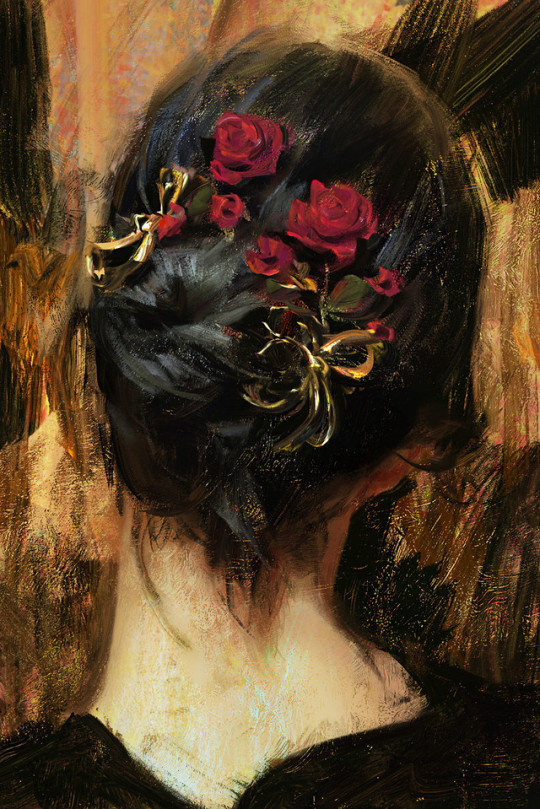
33K notes
·
View notes
Text
grannyweatherwax:
this isn’t really a complete thought but sometimes i just get emotional about the human proclivity toward symbols, metaphors, images. there are roots in some very basic pattern-recognition stuff, that pareidolia effect that lets you see a face in the configuration of doors and windows on a building facade.
but also it’s what lets us use language, what tells our pattern-recognizing brains that this sound or this hand gesture or this pattern of marks scribed in clay or chipped in stone or inked on a page stands in for this other thing, means this concept or this object or this thing. and then it goes further, gains levels of complexity even beyond that.
like we know what seeds are, that you plant them and things grow. so there’s a step from that to seeds representing larger or more abstract concepts too, of growth and new beginnings and regeneration or fecundity. and you can stack the symbols, or change them. the image of seeds scattered on top of snow has a different evocation than the image of seeds scattered on dark rich soil and both are different from the image of seeds spilled on a cold linoleum floor or mouldering in storage unplanted or unfurling their first green shoots.
i can use these images as a language. as a shorthand to express concepts larger and deeper than the words themselves. to create emotional context and understanding in those who read them or hear them or run their fingers over the page and feel them.
and that’s just. pretty fucking great.
43 notes
·
View notes
Photo

Rambles of a Canadian naturalist - Samuel Thomas Wood - 1916 - via Internet Archive
2K notes
·
View notes
Photo

Lesbia - John Reinhard Weguelin
777 notes
·
View notes
Photo

‘Three queens of the Underground Kingdom’ by Viktor Vasnetsov. (1884)
2K notes
·
View notes





